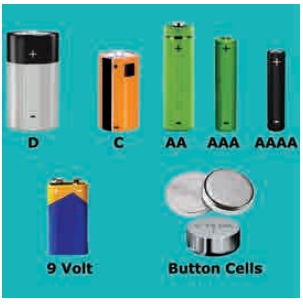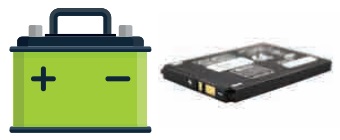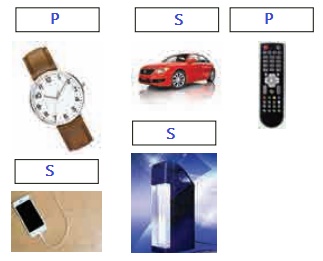Electricity | Term 2 Unit 2 | 6th Science - Cell | 6th Science : Term 2 Unit 2 : Electricity
Chapter: 6th Science : Term 2 Unit 2 : Electricity
Cell
Cell
A device that converts chemical energy into electrical energy
is called a cell.
A chemical solution which produces positive and
negative ions is used as electrolyte. Two different metal plates are inserted
into electrolyte as electrodes to form a cell. Due to chemical reactions, one
electrode gets positive charge and the other gets negative charge producing a
continuous flow of electric current.
Depending on the continuity of flow of electric
current cells are classified in to two types. They are primary cells and
secondary cells.
1. Primary
Cells
They can not be recharged. So they can be used
only once. Hence, the primary cells are usually produced in small sizes.
Examples
cells used in clocks, watches and toys etc.,
are primary cells.

2. Secondary
Cells
A cell that can be recharged many times is
called secondary cell. These cells
can be recharged by passing electric current. So they can be used again and
again. The size of the secondary cells can be small or even large depending
upon the usage. While the secondary cells used in mobiles are in the size of a
hand, the cells used in automobiles like cars and buses are large and very
heavy.

Examples
Secondary Cells are used in Mobile phones,
laptops, emergency lamps and vehicle batteries.
Activity 2: From the following pictures, identify
those use primary cell and secondary cell. Mark Primary cell as 'P'
Secondary cell as 'S'.

Battery
Often, we call cells as ‘batteries’. However
only when two or more cells are combined together they make a battery. A cell
is a single unit that converts chemical energy into electrical energy, and a battery
is a collection of cells.

Activity 3: Take a dry cell used in a flashlight
or clock. Read the label and note the following
1. Where
is the '+' and '–' symbol?
2. What
is the output voltage?
Look at the cells that you come
across and note down the symbols and voltage.
Warning
All experiments with electricity should only be performed with batteries used in a torch or radio. Do not, under any circumstance, make the mistake of performing these experiments with the electricity supply in your home, farm or school. Playing with the household electric supply will be extremely dangerous!
Related Topics